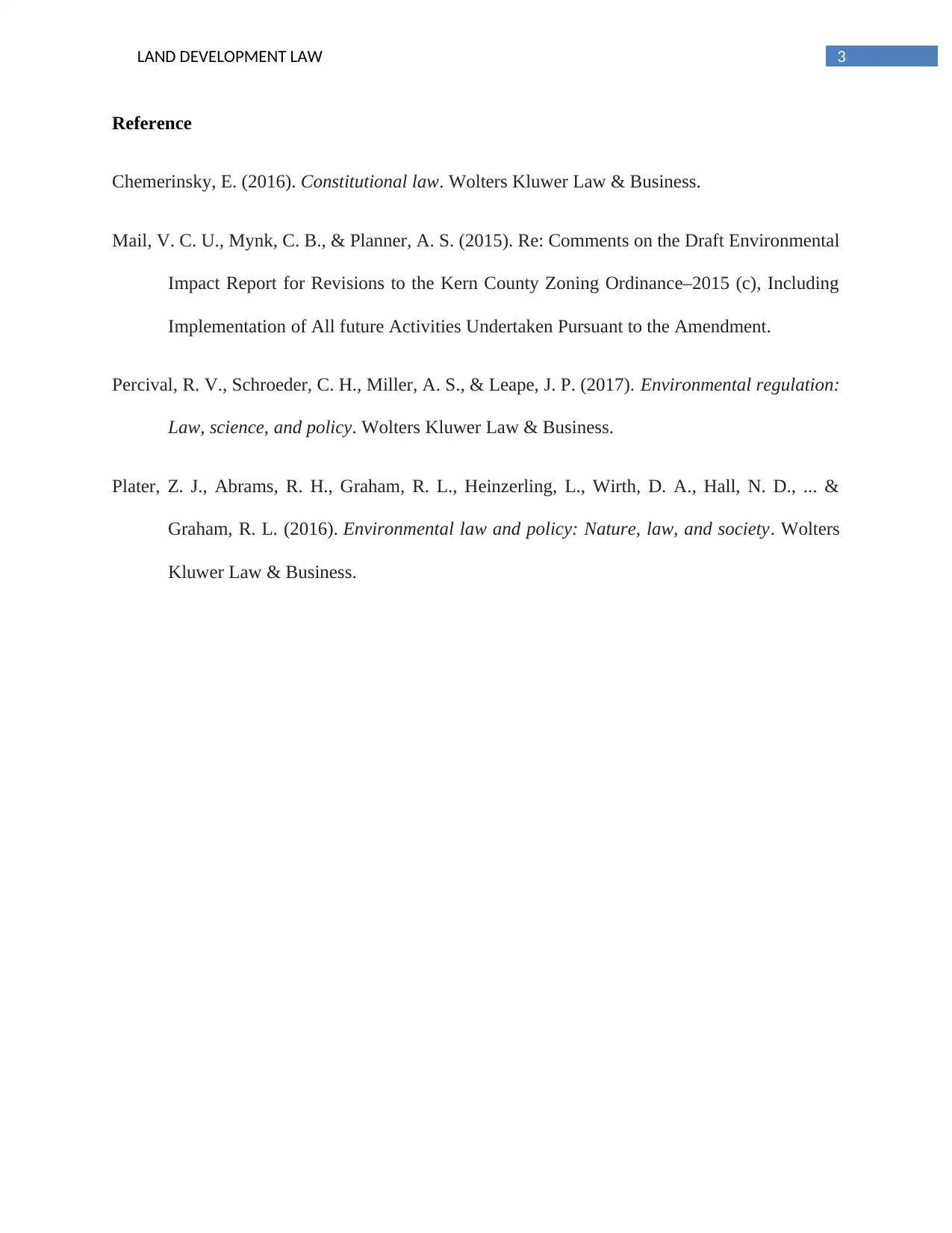Land Development Law Assignment: Zoning, Environmental Law, Cases
VerifiedAdded on 2021/05/31
|4
|767
|69
Homework Assignment
AI Summary
This document provides a comprehensive solution to a land development law assignment. It begins with an analysis of Village of Euclid v. Ambler Realty Co., focusing on zoning ordinances and their constitutionality under police power. The assignment then examines Berman v. Parker and Reitman v. Mulkey, discussing the legislature's authority to ensure community aesthetics and the implications of the Fourteenth Amendment on economic rights and civil liberties. Finally, it explores key environmental laws, including the National Environmental Policy Act (NEPA), the Resource Conservation and Recovery Act (RCRA), the Comprehensive Environmental Response, Compensation, and Liability Act (CERCLA), and the Clean Water and Air Act, highlighting their roles in environmental protection and public health. The solution is supported by relevant legal references.
1 out of 4







![[object Object]](/_next/static/media/star-bottom.7253800d.svg)